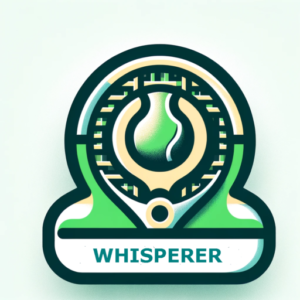Elevate Your Doubles Strategy: Play Smarter, Not Harder


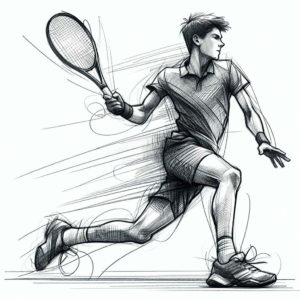
Let’s face it. We just don’t enjoy playing against certain opponents—they can frustrate us, get under our skin, or just make us feel uncomfortable on the court. Some players, unfortunately, are out there just to play mind games!
When facing someone like that, the key is to stay focused and play your game—exactly what they’re trying to disrupt.
Here’s a set of approaches to help you handle these situations:
Concentrate on your game plan and each point, rather than any negative feelings toward the opponent. This keeps your energy channeled into constructive goals, like targeting specific areas on the court or sticking to shot patterns that work. Shifting focus to the task at hand, rather than the opponent, can be incredibly freeing and help keep emotions in check.
If you can’t stand an opponent, try using a bit of humor to take the edge off. Give them a lighthearted nickname like “Misery Guts” or “Queen Delay” before stepping on court—it makes them feel a little less intimidating!
Create small, actionable goals for the match, such as aiming for the opponent’s weaker side, positioning yourself effectively at the net, or keeping the ball deep. Having clear objectives pulls your focus back to the game and reduces emotional distractions by replacing them with practical tasks.
On-court, a 4-7-8 breath before each serve or return can help maintain that focus. Rituals are powerful tools for staying in control of your emotions and keeping distractions at bay.
Sometimes emotions can take over when we aren’t actively engaged in the point, so maintaining proper court positioning can help. Stay alert to your partner’s movements to stay connected to the play. This promotes a sense of teamwork and keeps you mentally in the moment, preventing focus from drifting to frustrating aspects of the match.
Use positive self-talk to keep confidence high. Phrases like, “Stay strong,” “One point at a time,” or “Stick to the plan,” can counter negative thoughts and help keep emotions from interfering, reinforce confidence and keep your mindset on the game.
With these strategies, you can tackle even the toughest opponents with a focused mindset.
The goal is to stay in control of what you can, letting go of what you can’t, so you can play your best game possible — point by point.
Read more–> Mind Games
It’s disappointing that some coaches are encouraging players to unsettle their opponents in ways that stray from the spirit of fair play. It raises questions about the kind of values these tactics are instilling in young players for the future.
Opponents often have subtle ways to distract you that don’t involve hitting the ball at all. Recognizing these tactics can make a big difference, helping you stay focused, resilient, and in control no matter what comes your way.
Here are some common tactics opponents may use to unsettle you and break your focus:
Some opponents will try to mess with your head by talking to you during the match, making negative comments, or praising your mistakes. They want you to overthink and lose confidence.
An opponent may take too long between points, adjusting their equipment, towel breaks, or walking slowly to serve. This slows down your rhythm and makes it hard to stay in your groove.
Opposite to slow play, some players rush between points, serving too quickly or hurrying you into mistakes. If you’re not ready, this tactic can make you feel pressured and lead to rushed, sloppy play.
Even if they’re not cheating outright, some players will argue every close call, creating tension. They want you to second-guess your own judgment, disrupting your focus on the game.
Opponents might exaggerate their energy or show off overly confident body language—like fist pumps or aggressive looks—trying to intimidate you or make you feel they are unbeatable, even if they’re not.
Constantly questioning the umpire, asking for reviews, or bringing up unnecessary issues can break the flow of the match and throw you off mentally.
Some opponents will purposely mix up their game—playing slow and defensive, then suddenly hitting aggressive shots. This inconsistent pace can make it hard for you to find your rhythm.
Some players might fake an injury or pretend to be extremely tired, only to suddenly spring back into form. They want you to let your guard down and get caught off-guard when they start playing hard again.
After winning a point, an opponent might celebrate excessively—even on minor points—to make you feel worse about your loss and break your concentration.
Some players will roll their eyes, clap sarcastically, or even avoid shaking hands properly. These small acts of disrespect are designed to irritate you and get under your skin.
Your opponent might grunt loudly, stomp their feet, or make distracting noises during your serve or rallies to break your concentration.
Sometimes, players will take long medical timeouts to break your momentum. And, talk to the coach in the bathroom! Just remember only you and your opponents can hit the ball — no matter what the coach says.
A smart opponent might relentlessly target your weak spots, like your backhand or net play. This can mentally drain you if you start focusing on your weaknesses rather than adjusting your strategy.
If there’s a crowd, some players may encourage their supporters to make noise, distract you between points or clap your errors. It can be hard to ignore, especially if the crowd is on their side.
In doubles, an opponent might make comments about your partner, pretending to agree with them or saying things to make you doubt your teamwork.
Some players try to act like they don’t care about the outcome, which can make you feel less motivated. They’ll shrug off mistakes or losses as if they don’t matter, trying to make you question why you’re trying so hard.
While tennis is non-contact, some players will use their body language or stand very close to you when at the net to intimidate you, making you feel uncomfortable.
An opponent might intentionally play at a lower level during practice or warm-up to make you underestimate them once the match starts. When they switch gears, you may feel caught off-guard.
Sometimes, players will take long medical timeouts to break your momentum. While some injuries are real, others can be exaggerated or faked to disrupt your rhythm and focus.
Recognizing these tactics is the first step to staying mentally tough and prepared for anything an opponent throws at you.
Embrace the fact that your opponent seems to believe they can’t beat you through skill alone!
Stick to your game plan, stay composed, and remember that mind games are only effective if you let them get into your head!
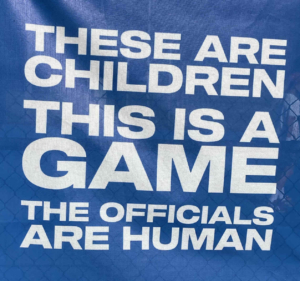
Last week, I underwent laser surgery to repair a small tear in my left eye. Unfortunately, the situation escalated when liquid penetrated under the retina after surgery, causing more floaters and requiring additional surgeries.
The risk of retinal detachment, a severe condition affecting about 1 in every 300 people, became very real to me. Without timely intervention, this condition can lead to permanent vision loss.
The retina, a thin layer at the back of the eye, plays a vital role in capturing images and sending them to the brain. Retinal detachment occurs when the retina separates from the back of the eye due to fluid seeping underneath, which typically follows a retinal tear. Common causes include eye trauma, infections, or complications from surgery.
As we age, the risk of retinal detachment increases due to changes in the vitreous fluid in the eye. Other risk factors include extreme nearsightedness, family history, genetic conditions and previous eye surgeries or injuries, particularly in sports such as tennis.
Retinal detachment is painless, making it hard to detect without being aware of the symptoms. Some key signs include:
– Sudden flashes of light when moving the eyes
– Increased floaters in one eye
– A shadow or curtain spreading across your vision
– Distorted vision
Regular eye exams are essential to catch issues early. Protect your vision by living a healthy lifestyle, exercising, and using protective eye wear.
Tennis players often focus on physical fitness and match strategy, but remember to take care of your eyes, as vision is crucial for performance.
If you notice any unusual changes, consult an eye specialist immediately—early action could save your vision!
Want to learn more about the critical role vision plays in tennis? Click links below for further reading.
The United Cup is a mixed-gender tennis competition that brings together teams from 18 countries. The event, launched in 2022, is played on hard courts across multiple Australian cities—most notably in Sydney and Perth—and serves as a lead-up to the Australian Open.
The United Cup features both men and women in a unique team format where each tie consists of one men’s singles match, one women’s singles match, and a mixed doubles match. This innovative format allows both ATP and WTA players to compete together for ranking points and significant prize money.
The event offers a substantial prize pool of $10 million, split between the ATP and WTA tours, with a maximum of 500 ranking points available for individual players based on their performance. The tournament is set up in a round-robin format, with group winners advancing to the knockout stages and finals
The next edition of the United Cup will take place from December 29, 2024, to January 7, 2025, with teams like Poland, the USA, Greece, and others competing.
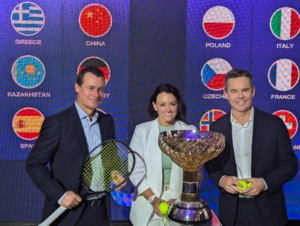
Photo Credit: Peter Staples
Handling disruptive tactics requires mental strength, focus, and preparation.
Here’s a general approach to deal with opponents trying to throw you off your game and beat you without using a racket:
You can’t control your opponent’s behavior, but you can control your reactions. When they try to distract you, remind yourself to focus on your own game—your footwork, your next shot, or your strategy. Ignore everything else.
Having a solid between-points routine helps block out distractions. Whether it’s bouncing the ball a certain number of times before serving, adjusting your strings, or taking a deep breath, this keeps you grounded and focused on the next point.
Whether it’s arguing, celebrating excessively, or making comments, don’t get pulled into their game. Stay calm and avoid talking back or showing frustration. The more you stay composed, the less power they have over you.
If you feel yourself getting frustrated, take a moment to reset mentally. Deep breathing, visualizing positive outcomes, or simply pausing before your serve can help you regain focus.
Cheating, slowing down play, or distractions are easier to pull off when the points are close. Stay aggressive and play with confidence. By dominating the points, you leave less room for them to exploit you.
Know that certain opponents will try these tactics, especially in competitive matches. Expect it and be ready. When it happens, you won’t be surprised, and you’ll be mentally prepared to deal with it.
If your opponent’s tactics cross the line—such as cheating or delaying too much—don’t hesitate to call for an umpire or ask a tournament official for assistance. You don’t have to handle it all alone.
When you feel frustration building, use it as fuel to play even better. Let it drive you to focus more sharply and move more aggressively. Turning frustration into positive energy can help you stay in control of the match.
In general, your opponent can only throw you off your game if you allow it. Stay mentally strong, focus on your game plan, and rise above their attempts to distract or frustrate you.
While technique and physical ability are crucial, your mental game is often what separates winners from losers, especially in high-pressure situations. At the end of the day, you’re not just battling with your opponent’s shots—you’re also battling your own mindset. Victory is often won in the mind before it’s won on the court.
Don’t let your opponent beat you without using a racket.

The principle of gripping tightly with the pinkies while keeping the rest of the fingers looser, as practiced in Japanese swordsmanship, can be transferred to tennis serves in a way that significantly improves power, control, and fluidity.
In swordsmanship, the pinkies provide a stable base for control and power, while the looser grip from the other fingers allows for smooth, fluid motions. This same concept can be applied to your tennis serve, resulting in a more efficient and effective technique.
Here’s how this soft hands concept can be applied to serving:
Just like in swordsmanship, the pinky and ring fingers play a key role in generating power for your tennis serve. A firm grip with the pinkies allows you to channel strength from your arm and core into the racket, ensuring a solid transfer of energy during contact with the ball.
– How to Apply: Focus on gripping the racket tighter with your pinky and ring fingers while preparing for the serve. This grip stabilizes the racket, helping generate more power when you accelerate through the ball. This becomes particularly effective during the wind-up and contact phases of the serve.
The loose grip in the index and middle fingers promotes flexibility in the wrist, essential for generating spin and allowing the racket to move smoothly through the contact zone. A tight grip throughout all the fingers would limit wrist movement, reducing both spin and racket head speed.
– How to Apply: Keep your index and middle fingers relaxed during the serve motion, allowing your wrist to snap freely through contact. This helps generate topspin, slice, or any desired spin more effectively, while keeping your motion fluid.
Gripping tightly with the pinkies while keeping the upper fingers looser provides a strong base for control while allowing for subtle adjustments in the racket’s angle. This combination ensures accuracy without the risk of over-gripping, which can lead to tension and inconsistent serves.
– How to Apply: Focus on keeping a looser grip in the upper fingers during the toss and as you bring the racket through the hitting zone. This allows for fine-tuning of the racket face, helping with better ball placement, especially in crucial moments like second serves where precision is key.
A balanced grip helps promote a relaxed, natural rhythm in your serve. The firm pinky grip stabilizes the racket, while the looser upper fingers facilitate a smooth, rhythmic swing, preventing muscle tension and enabling consistent timing.
– How to Apply: Practice serving while focusing on the balance between a tight pinky grip and relaxed upper fingers. This allows you to maintain a calm, relaxed rhythm through the entire serve motion, leading to more consistent contact and timing.
The wrist flexibility gained from the looser grip allows players to execute a variety of serves—whether it’s adding extra topspin, slice, or kick. The relaxed grip in the upper fingers enhances your ability to control the ball’s trajectory and spin, making your serves more versatile and unpredictable.
– How to Apply: For spin serves, focus on keeping your wrist flexible by maintaining a looser grip with the upper fingers. This will help you impart more spin on the ball, allowing you to execute slice or topspin serves with ease, and make your serve harder to read for your opponent.
By incorporating the principle of gripping tightly with the pinkies while keeping the rest of the fingers loose, you can significantly improve your serve. This soft hands grip helps generate power, enhances wrist fluidity for spin, and increases control and precision.
Applying these tips will lead to a more effective, consistent, and versatile serve, helping elevate your overall game performance.
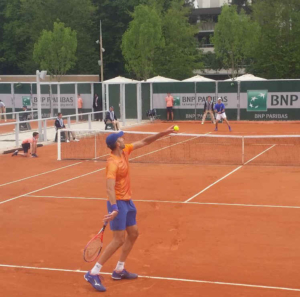
Take a close look at Karlovic’s grip on his serve, captured during his match against Thommo at the French Open a few years ago. It almost resembles a two-finger grip, reminiscent of the way Gonzales used to serve! Photo credit: Tony Reynolds
The Universal Tennis Rating (UTR) has gained widespread use as a ranking system for players at all levels, including juniors. While it offers a global platform for tracking performance, it also presents challenges that may negatively impact the development of young players.
Here’s why UTRs are counterproductive for junior tennis development:
UTR often encourages players to prioritize winning matches over improving their overall game. To protect or boost their ratings, juniors may shy away from working on weaker areas and instead focus on strategies that yield immediate results. This short-term mindset can hinder the long-term growth needed to develop into a complete player.
Some juniors strategically avoid playing against opponents with lower UTRs to prevent a drop in their rating. This results in fewer competitive opportunities and less match experience. By limiting who they compete against, young players miss out on valuable learning moments and the chance to adapt to different styles of play.
UTR can create unnecessary pressure on juniors to consistently perform at a high level to maintain or improve their rating. This constant need for high performance may lead to anxiety, stress, and even burnout. Tennis at the junior level should be about development and enjoyment, not about feeling like every match is a high-stakes rating game.
To maximize their UTR, juniors may rely on winning rather than focusing on building a well-rounded skill set. This early emphasis on results can lead to over-reliance on specific strategies, like heavy baseline play or big serves, at the expense of mastering other important aspects of the game, such as net play, variety in shot selection, and mental toughness.
UTR puts rankings front and center, which can cause players, parents, and coaches to fixate on ratings rather than on actual progress. Development is not a straight line—there will be setbacks and breakthroughs. Focusing too much on rankings overlooks the importance of long-term growth, resilience, and skill acquisition that doesn’t always reflect immediately in match outcomes.
Juniors who are just starting to compete may struggle with a low UTR, making it difficult to participate in higher-level events. This can demotivate players who might otherwise flourish, particularly those who develop later. It can create a discouraging environment for young players if they feel their rating limits their opportunities.
To truly develop, juniors need to experiment with different strategies and techniques during matches. However, the fear of losing UTR points can lead players to adopt a cautious, risk-averse style of play, limiting their tactical and technical growth. Matches should be seen as opportunities for learning and development, not just preserving a ranking.
If you’ve made it this far, you’ve probably guessed—I’m not a fan!
While UTR offers a structured rating system, its application in junior tennis can create an environment focused more on results than on growth.
For young players, the emphasis MUST be on improving skills, gaining experience, and enjoying the process.
Tennis is a long journey, and juniors need the freedom to experiment, take risks, and develop at their own pace—without the constant pressure of protecting a rating.
Reducing the focus on UTR in junior tennis could foster a more supportive and balanced approach to long-term player development.

As returners, we don’t win many points against first serves—especially at the professional level. At the 2024 US Open, men won just 28% of first serve return points, and women fared slightly better at 36%.
But when the second serve comes into play, everything changes! Men’s return points won on second serves jumped to 51%, and women dominated with 54%.
So, how does this compare to the average player?
These statistics underscore the importance of developing both a reliable first serve to avoid giving opponents easy chances on the second, and a strong return game to capitalize on weaker second serves.
So, how can you boost your chances of winning those key second-serve return points? Here are three strategies:
Positioning and footwork are key. Stand inside the baseline, ready to attack the weaker second serve. Execute a quick cross-over step and focus on dynamic movements to get to the ball. An explosive first step can give you the edge, allowing you to take control of the point early.
Approach the point with a clear plan. Target the server’s weaker side—often the backhand—or go down the middle to cut off angles. Consider stepping around and using your forehand, especially if it’s your stronger shot. Mix up your returns—sometimes go aggressive, other times aim deep to extend the rally. Varying your placement keeps the server guessing.
While it’s tempting to go for a return winner, often a high-percentage shot (like a deep, controlled return) can force errors or set up the next point. Play the percentages—returning deep to the middle reduces the server’s angles. Extending rallies with solid returns can shift the momentum in your favor.
Get your footwork and positioning dialed in, plan your returns smartly, and aim to disrupt your opponent’s rhythm. Start winning those second-serve return points!

